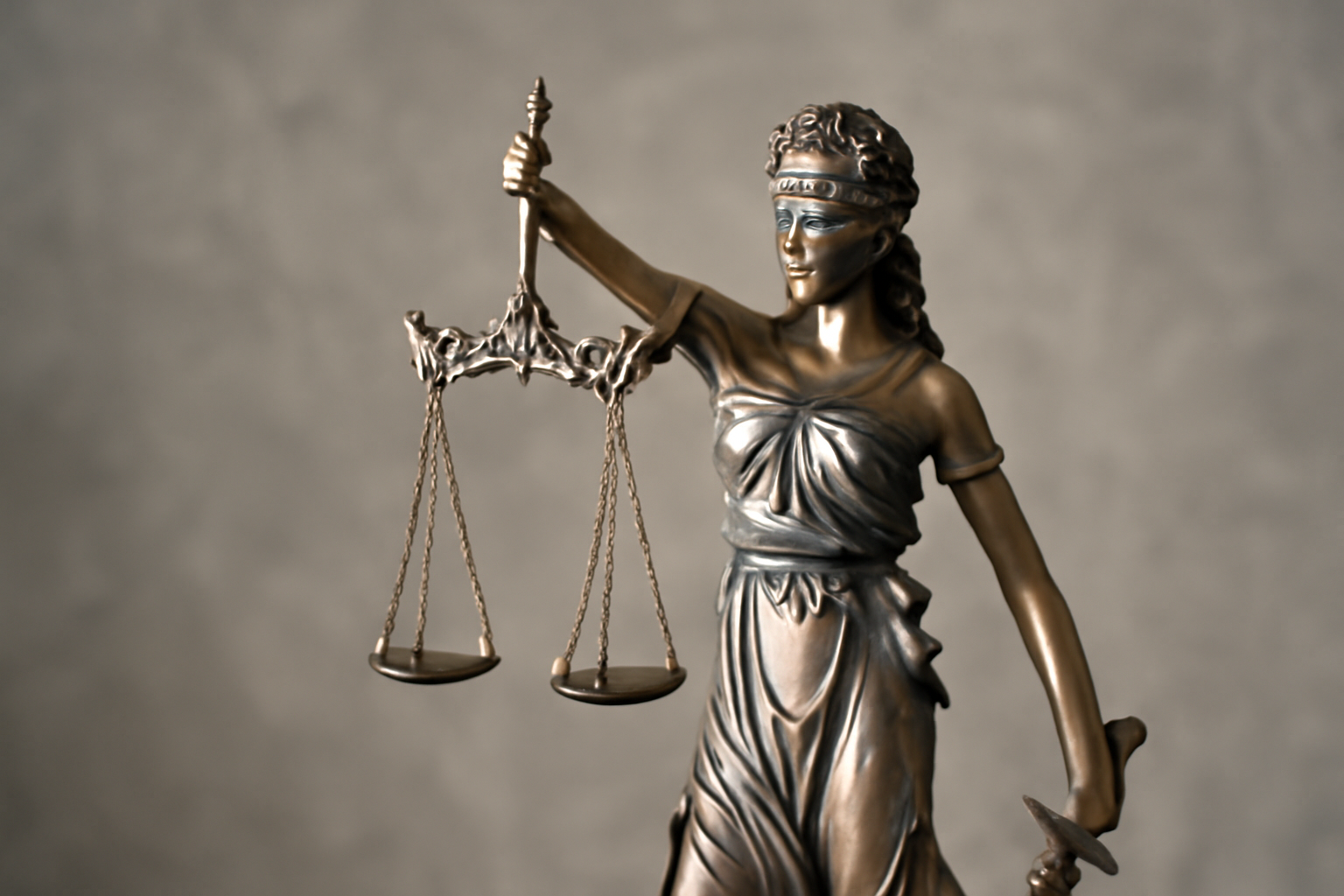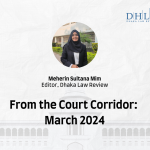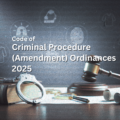Introduction
On 20 October 2024, the Appellate Division (AD) of the Supreme Court of Bangladesh (SCOB) delivered the judgment of the civil review petition challenging the decision of the AD in the 16th amendment appeal case. While the review judgment primarily deals with the question of explicitly restoring Article 96(8), it also examines several other significant issues, such as the independence of the judiciary alongside the accountability and the political bias of the judges. In the following sections, this decision is critically analysed.
Historical context
Before discussing the text of the judgment, a brief historical context relating to the mechanism of removing judges of the Supreme Court is relevant. When the Constitution was adopted in 1972, a Presidential Order could remove a judge of the SCOB, provided that it was endorsed by a majority of not less than two-thirds of the total number of members of the Parliament. However, the Fourth Amendment in 1975 curtailed the power of Parliament and provided the unilateral power of removal to the President. In 1978, the Supreme Judicial Council (SJC), consisting of the Chief Justice (CJ) and the two senior judges of the SCOB, was introduced through a martial law proclamation and was granted the power to remove SCOB judges, which was subsequently confirmed by the Fifth Amendment in 1979.
Later, in 2014, the Sixteenth Amendment removed the provisions that established the SJC and vested the power to remove the SCOB judges in the Parliament once again. Consequently, in the same year, writ petition no 9989 challenged the constitutionality of the said amendment, in which the High Court Division (HCD) of the SCOB declared the amendment unconstitutional. In 2017, the AD dismissed the civil appeal, upholding the decision of the HCD. However, in the appeal judgment, the AD did not explicitly restore Article 96(8) in the operative part, and as such, this was a central issue of the review judgment.
Restoration of Article 96(8)
Syed Refaat Ahmed, CJ, has dealt with the essence of the matter at the very beginning: the omission of explicit mentioning of Article 96(8) in the operative portion of the judgment of the AD on appeal, despite that provision pertaining to the resignation of the SCOB judges. As per the CJ, although the omission has nothing to do with removing the right of judges to resign, it created unnecessary ambiguity (Pages 2—3). According to him, the reason the AD in its appeal judgment did not explicitly restore Article 96(8) is that it was not needed, as the amended Article 96(4) already contained the same provision.
While restoring the clause, one pertinent question was elaborately answered as to whether a judge of the SCOB may resign from office. In the language of the CJ, the provision regarding the resignation of judges ‘remains an entrenched part of the constitutional architecture’ (Page 5). Thus, Article 96 was explicitly restored in its entirety, including clause (8), and the right to resignation by judges has been recognised as a constant feature of our constitution.
The Code of Conduct for the judges of the SCOB
Before analysing the findings of the AD, let us navigate what the Constitution states in this regard. Article 96(4) stipulates, ‘The function of the Council shall be (a) to prescribe a Code of Conduct to be observed by the Judge.’ Thus, as per textual interpretation, the authority lies in the SJC to formulate a Code of Conduct (Code) for the judges of the Supreme Court. However, the then CJ, Surendra Kumar Sinha, in the appeal judgment set out a Code to be followed by the judges.
Turning to the present judgment itself, while the CJ has not directly addressed the question of who holds the authority to formulate the Code, he has opined, ‘the Code of Conduct is to be considered as permitting of growth and mutations by drawing on the inherent power of only the Supreme Judicial Council to revisit existing provisions as and when necessary’ (Page 7). This observation gives rise to two critical questions: first, whether the Code formulated by the AD was valid and within the ambit of Article 96(4); and second, whether the SJC possesses the authority merely to revisit and modify existing provisions, or whether it also has the power to formulate an entirely new Code.
Regarding the validity of the earlier code, Justice Zubayer Rahman Chowdhury in the review petition has observed that the formulation of the Code by then CJ seems to be in excess of the authority vested in the AD (Page 14). Justice Chowdhury has reasoned that Article 96(4)(a) has vested the power in the Council, not the AD. Although the members of the Council are also judges of the AD, the Council is separate and distinct from the AD (Pages 14—15).
In the same vein, Justice SM Emdadul Hoque also opined, ‘it is the Supreme Judicial Council that must hold the absolute authority to formulate the Code of Conduct and to make rules for pioneering the transparent inquiry and investigation against the Judges of the Supreme Court’ (Page 34). Hence, both Justices seem to endorse the literal interpretation of Article 96(4).
However, Justice Syed Md Ziaul Karim is seen to reiterate the Code formulated by the AD, saying, ‘With a view to avoiding any confusion we formulate the code of conduct in exercise of powers under article 96’ (Page 16).
This stance taken by Justice Karim has rendered the matter unsettled once more. It is respectfully submitted that his observation appears to undermine the purpose and effect of Article 96. As mentioned earlier, two other judges are of the opinion that the authority is solely vested in the SJC and the SJC cannot be equated with the AD. However, Justice Karim’s observations postulate that the AD can legitimately exercise the authority to formulate the Code. Thus, at this point, the opinions are divergent regarding this authority, and there remains a lack of proper explanation as to why the AD composed the Code, ignoring the express instruction of Article 96(4)(a).
Quite interestingly, Justice Md Ashfaqul Islam finds Code No 38(a) and (b) as essentially similar to Article 96 (pre-16th Amendment) (Page 10). In his opinion, this reproduction creates unnecessary redundancy, posing potential threats of confusion and undermining the constitutional mechanism for judicial independence vide Article 96 (Page 10). While his view exposes a certain problem of the Code, his observation skipped the discussion on who has the power to formulate the Code. In my humble view, the fact that he only challenged Code No 38(a) and (b) hints at the idea that he has accepted the validity of the rest of the Code. This position further complicates the matter.
Judicial independence and accountability
The core premise of the 16th Amendment’s validity revolves around judicial independence and accountability. In the language of Mr Justice Chowdhury, the essence of the impugned amendment was ‘an attempt by a despotic and fascist Government to wrest the power of removal of Judges from the Supreme Judicial Council and vest them [sic] in the hands of the Parliament, thereby putting the independence of Judges at stake’ (Page 13). He further added that when the authority to remove judges vests in the Parliament, it erodes the confidence of the general public in the judiciary.
Further, while emphasising the significance of the independence of the judiciary, Justice Md Rezaul Haque observed that independence of the judiciary does not provide unrestrained powers to judges to do whatever they wish (Pages 24—25). Instead, at the core of judicial independence is the concept of judicial accountability. He stressed the significance of the SJC by saying that it was created to ensure judicial accountability of judges, and the Code of Conduct promulgated by the Council is also an attempt to secure such accountability.
Politically motivated derogatory remarks by judges
In the writ petition judgment by the HCD, Justice Md Ashraful Kamal, who provided the dissenting judgment, made several derogatory remarks concerning certain persons, including former President Ziaur Rahman, Justice Abu Sayed Chowdhury, and Golam Azam. The AD, in its appeal judgment, expunged those remarks, and here in review, the Court reasoned why those remarks were expunged. In review, the AD referred to two Supreme Court of India judgments (Chief Election Commissioner of India v MR Vijayabhaskar and Others and AM Mathur v Pramod Kumar Gupta), both of which held that judges should refrain from making derogatory remarks about any person or institution unless it is absolutely necessary for the decision of the case.
In the present judgment, it was held that although those remarks form part of obiter dictum having persuasive value only, there is a pressing necessity to expunge those due to sheer political motivation and lack of due relevance to the case. On this point, one particular remark as to the citizenship of Golam Azam was held to be violative of Article 111, as the matter was already decided by the AD and the decision was binding on the HCD (Page 49). The Court cautioned judges against such politically motivated statements and stressed the need for impartiality of judges while dispensing justice.
Conclusion
While the court resolved many vital issues in this judgment, such as the restoration of Article 96(8), it failed to give a consistent and straightforward answer to the question: who has the authority to formulate the Code of Conduct? As the apex Court of the Republic, the SCOB should ensure consistency and clarity in its decisions, and its judges should refrain from making unnecessary or politically motivated remarks.











No Comments
Leave a comment Cancel